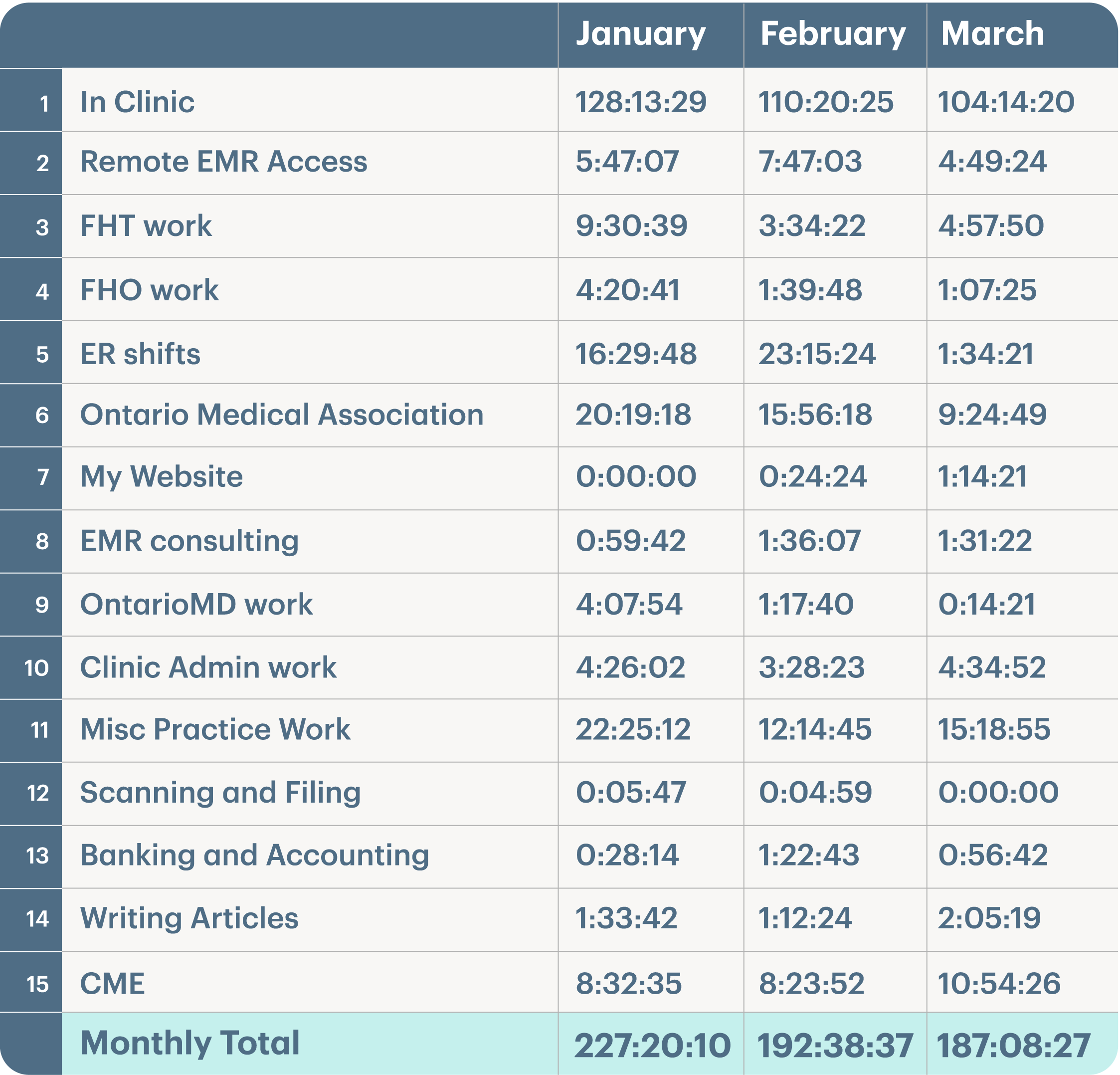
Ask MoneyTalk: How can tracking my working hours turn into money and more free time?
While the COVID-19 pandemic has disrupted our schedules, it hasn’t changed how busy we are. Dr. Adam Stewart explains how to get your time under control and how to prioritize what’s most important to you.

DR. ADAM STEWART
FAMILY PHYSICIAN
A: What a time we have been living through. I started writing this article just before the COVID-19 pandemic hit. And then, as you all know, other priorities took over. Right now we’re all dealing in some degree with the ebbs and flows of infection rates and the ways the pandemic changed the way we do things. Our productivity is being tested and time management remains an important principle.
Before the pandemic, I was speaking with someone and was referring to my “Type-A” personality. She replied jokingly, “Aren’t all doctors Type-A?”
This got me thinking that, while most doctors may fall on a spectrum of Type-As, I don’t believe most are at my end of the continuum. I’m not sheepish about it, though. 🙂
I certainly am Type-A (highly organized) and a numbers guy (conscious of time efficiency). And while I accept that not everyone has to share my geeky love for pouring over spreadsheets, I am here to try to instill in each of you a habit that will boost your bottom line and help improve your decisions about where to spend your precious time.
The fact is, we spend our time in different places doing different things. Many of us, especially family physicians, work in multiple different areas outside of our clinics. For example, you may do additional work in hospital inpatient wards, nursing homes, emergency rooms, surgical assisting, anesthesia, and so on. Many of us have non-clinical roles as well. For instance, you may be the chair of a committee, the lead physician for your team or have an executive role for some organization. The list may be endless.
But do you truly know the value of your time? Do you know what roles and activities are providing you with the greatest value?
Do you know where you are spending your time?
One of the most important tips I may be able to offer is this: Download a smartphone app that allows you to track your time doing different things.
I have used the same app on my phone for over seven years now. (The habit sticks, I’m telling you!) The app functions as a stopwatch. I simply start and stop it corresponding to the type of work I am doing. (For instance, the clock is running right now under my “Writing” category.)
Do a quick search in your app store for “Time Tracker” apps and you’ll find dozens of good options. As I’ll show next, choose one that allows you to export your data to a spreadsheet for further analysis.
You must also be able to customize the types of work and tasks that you track. For example, Clinic, ER, Hospitalist, Remote EMR work, Family Health Team meetings, Lead Physician Work, CME, Banking and Accounting, Scanning and Filing, and so on.
The more “Type-A” and granular, the better!
Summarize your time
Once you have been tracking your time, export the data to a spreadsheet so you can summarize your numbers. You may choose to analyze your time on a monthly, quarterly, or annual basis.
Here is an example of how the exported and summarized data may look like down to the hours, minutes and even seconds.

Compare your results against your income
Hopefully, you’re already tracking your banking using automated software. You can use your accounting software to generate reports on your income versus expenses for your different types of work. For example, generate a simple profit and loss report of a given time period.
You can also use this information to calculate your hourly income.
For example, let’s say you tracked your time for a full year and discovered that you worked a grand total of 2,000 hours in 2019. From your accounting software, you can see that you generated $400,000 in gross revenue that same year and that you had $150,000 in expenses (so, $250,000 net income after expenses). From this, you can deduce that your overall hourly revenue last year was $200/hour gross, or $125/hour net.
But then you can get a little more granular, which is the exciting and useful part.
Let’s say you drilled down on your 2019 income and discovered that, after expenses, you earned:
- $150,000 from your Clinic
- $60,000 from working ER
- $70,000 from working in the Nursing Home
You compare that to your time logs and see that you spent:
- 1,000 hours of time related to your clinic (including not just your actual time in clinic, but also all the remote EMR work and administrative duties)
- 300 hours working ER
- 400 hours related to Nursing Home work
This amounts to net incomes of:
- $150/hour from your Clinic
- $200/hour for ER work.
- $175/hour for Nursing Home work
These are just simple, hypothetical examples. But you can slice and dice the data in innumerable ways to give you tremendous insight into your rates of return on your time.
Prioritize and make decisions when needed
If you are at a cross road, wondering if you should spend more time in one area over another, you can use this information to make important decisions. I have used my data to help guide me in some pivotal decisions over the years. Five years ago, I devoted time to the ER but after examining the time spent there, and the returns on my time versus my time in my clinic, I decided to spend more time in the clinic. Now, it’s not all about the dollars and math. Certainly, your personal passions and sense of satisfaction should enter into the equation too. But knowing the financial impact of your decisions helps you make more informed decisions.
You may notice a poor rate of return on your clinic. So, this will prompt you to dig deeper. Are there ways you make it more efficient? Are there ways you can increase your revenue?
All of this can lead you to higher rates of return on your time, which is arguably a doctor’s most precious resource.
Adam Stewart is a family physician with a practice based in Madoc, Ontario. In 2017 he was named by the Canadian Medical Association as one of "17 physicians who have helped shape the future of health care." More information on his practice can be found at www.stewartmedicine.com.















